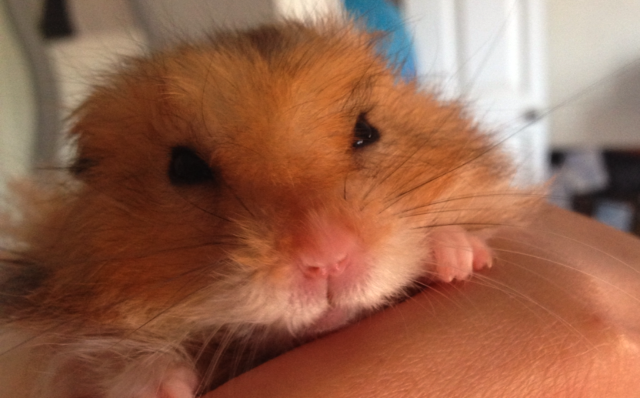
Photo copyright Erica Peachey, www.ericapeachey.co.uk
Hamsters are small but they still need veterinary care. They are prey animals, so they try not to show any sign of pain or illness. We cannot hear them crying or shrieking. Hamsters may suffer from tooth problems, food stuck in their face pouches, stomach trouble and diarrhoea sometimes called wet tail, lung disease, heart disease, cancers, hormone disorders, skin diseases and parasites, arthritis, and others. If cold, hamsters go into hibernation, appearing dead. If you put the cage into a warm area your hamster will wake up.
Chronic stress often shown by bar biting, bad housing, the wrong kind of bedding, a poor diet and lack of exercise often make hamsters ill. Here are some signs that something is wrong with your hamster. If you recognise any of them, take your hamster to a vet.
These signs were adapted from the references below. Signs that would probably only be recognised by experts were omitted.
REFERENCES
Adby, S., & Neill, D. O, (2004), Hamsters in Sickness and in Health, Milverton, UK, Capall Bann Publishing.
Hawkins, P.,(2002), Recognising and assessing pain, suffering and distress in laboratory animals, Southwater, UK, RSPCA
Mayer, J., (2007), ‘Use of behavior analysis to recognize pain in small mammals,’ Lab Animal, 36, 43-48
Orcutt, C. J., (2005), ‘Common hamster diseases and treatment,’ Proceeding of the North American Veterinary Conference, 1358-1360.